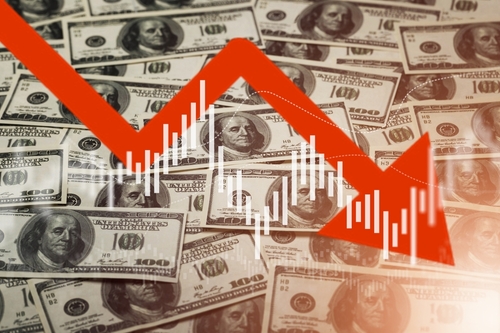
Core consumer prices in the United States have hit a new record high for the 50th consecutive month, according to the latest data released on August 14, 2024. This relentless increase in core inflation, which excludes the volatile food and energy sectors, highlights ongoing challenges for American households as prices for essential goods and services continue to rise.
The core Consumer Price Index (CPI) rose 0.2% month-over-month in July, matching analyst expectations, while the year-over-year increase slowed slightly to 3.2% from 3.3% in June. Despite the slowdown, this marks the 50th straight month of rising core consumer prices, setting a new record. The broader inflation measure also showed a 0.6% increase from July to August, driven by surging energy prices, particularly gasoline, which soared by 10.6% over the month.
⚠️ JUST IN:
*U.S. AUGUST CONSUMER SENTIMENT RISES TO 67.8; EST. 66.7; PREV. 66.4
🇺🇸🇺🇸 pic.twitter.com/AANxNq3S1l
— Investing.com (@Investingcom) August 16, 2024
Shelter costs, which make up about 40% of the core inflation measure, continue to rise, further straining household budgets. In July, rent inflation rose 0.42% month-over-month and 5.09% year-over-year, underscoring the persistent housing affordability crisis. This increase in shelter costs was one of the key drivers behind the overall inflation figures, despite other areas showing signs of moderation.
The transportation sector also saw significant price increases, particularly in services like car insurance and new vehicle prices, which reversed previous declines. Used car prices, however, fell by 2.3%, providing some relief to consumers in that market. Airline fares also dropped by 1.2%, reflecting a broader trend of declining prices in the travel sector.
US consumer sentiment rose in early August to 67.8 from 66.4 in July, the first increase in five months.
Michael McKee has the details https://t.co/EytasSRW8c pic.twitter.com/uUSljVy67j
— Bloomberg TV (@BloombergTV) August 16, 2024
Economists and market analysts remain concerned about the trajectory of inflation, particularly as energy prices remain volatile. The Federal Reserve has been closely monitoring these developments, with many experts predicting that the central bank may have to maintain or even increase interest rates to curb inflation, despite some recent banking sector turmoil that has complicated the outlook.
The persistent inflationary pressures have left millions of Americans grappling with higher costs for essentials like housing, transportation, and food. In August, grocery prices continued their upward trend, with increases in the cost of meat, poultry, and other staples. These rising costs have eroded consumer purchasing power, leading to widespread economic uncertainty.
As the U.S. economy moves into the latter half of 2024, the challenge of taming inflation remains a top priority for policymakers.
The Federal Reserve faces a delicate balancing act as it seeks to stabilize prices without triggering a broader economic slowdown. With core inflation showing little sign of a significant retreat, the path forward is likely to involve continued vigilance and potentially more aggressive monetary policy measures.












